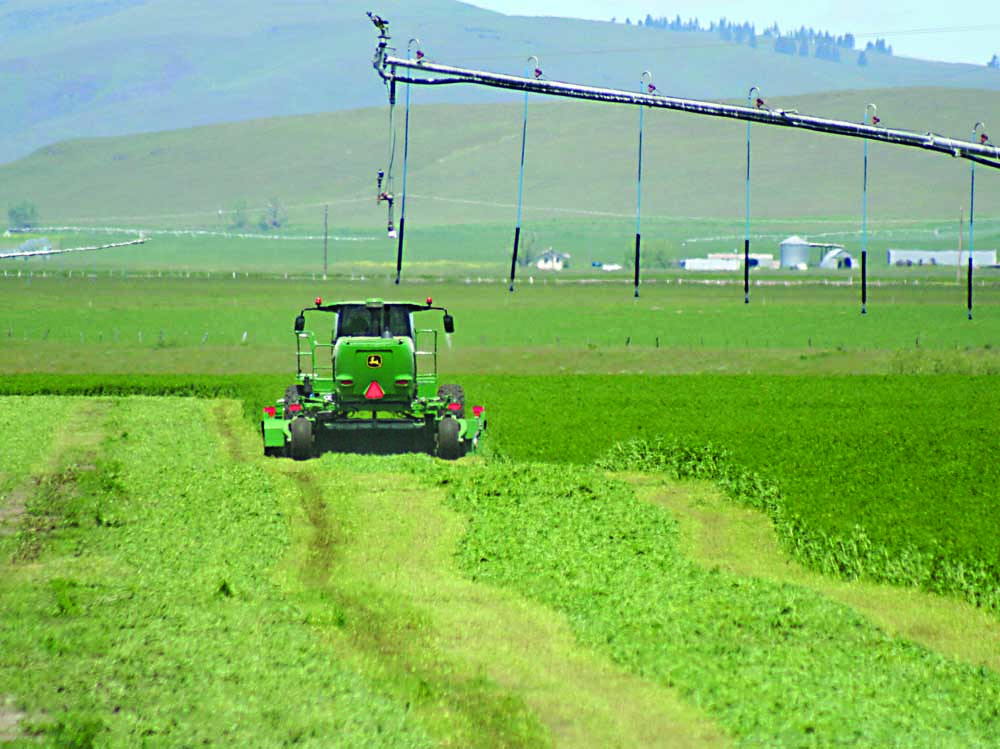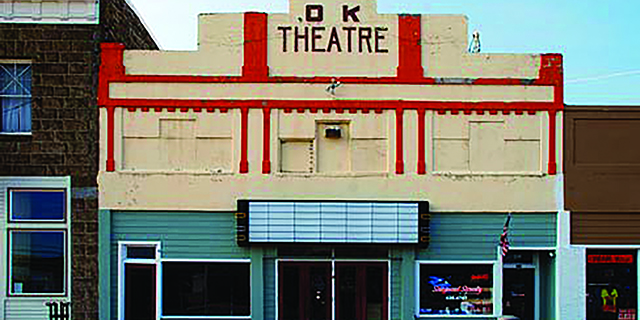Making hay: Farmers finally get to cut first crop of year
Published 7:00 am Sunday, June 26, 2022

- Seth Parker, who works for Mark Butterfield, leaves alfalfa hay in windrows to dry Thursday, June 23, 2022, in a field along Dobbin Road south of Enterprise. It’s the first cutting of the year.
WALLOWA COUNTY — With the rains apparently done for a while, Wallowa County farmers are making hay while the sun shines, as they mow their first cutting of alfalfa across the county.
“It looks like we have a really good window toward putting hay up,” said Mark Butterfield, chairman of the Wallowa County Hay Growers. “I don’t think anybody’s complaining about extra moisture. It’s been a blessing both for the stockgrowers and us.”
“It’s finally turned into summer,” said Tyler Coppin, who with his father, Mike, has about 1,000 acres in both timothy grass and alfalfa in the Upper Prairie Creek area. “I just hope the hot weather will last.”
That’s critical to get the mown hay to dry on the ground before baling.
Short crop
Most hay growers agree the cold, wet spring hindered growth of the hay crop.
Tim Melville, who owns and operates Cornerstone Farms Joint Venture with his wife, Audry, sons Kevin, Kurt and their wives, said their farm has about 300 acres in alfalfa and about 250 in timothy grass in various fields around the county.
“It’s a little bit short and a little bit later than usual,” Tim Melville said. “It’s been colder and it didn’t grow as much as usual.”
But, he said, the slower growth will make for good quality because it won’t be too mature.
Son, Kurt, who is in charge of the farm’s hay harvest, got a bit more technical.
He said Wednesday, June 22, the alfalfa is “a little bit lighter than usual because we haven’t had as many heat units, but it looks like a good window to knock it down. The forecast has about 10 days to take that first cutting.”
The timothy grass takes a bit longer, he said, adding that it should be another two or three weeks before it’s ready to cut.
Butterfield said his two types of hay were mixed.
“Alfalfa’s behind and timothy’s is ahead, but everything looks good,” he said.
Butterfield has about 1,900 acres east of Joseph evenly split between the two types of hay.
Market price
Most growers are expecting higher prices for their hay once it’s baled.
Butterfield was hesitant to predict the price.
“It’s a bit of a jinx to predict hay prices,” he said. “It should be as high or better than last year.”
He said he sold his hay for $190-$290 a ton last year on the farm — where the buyer loads and hauls it from the farm.
Kurt Melville agreed it will likely be comparable to last year, but he said he hasn’t been keeping close track of the market.
“It’ll be a little bit lighter than normal,” he said. “Until we actually get some up, sometimes it’s a bit deceiving, but I think it’ll be about 20% less than usual, but I could be completely wrong until start running balers through fields.”
Tyler Coppin, on the other hand, is quite optimistic as to the price this year.
“I’m thinking this is going to be highest prices we’ll get in anyone’s lifetime,” he said. “It’ll be knocking on the door of $350-$400 a ton, maybe more.”
He attributes this to the fact that competitors in the Ellensburg, Washington, and Columbia Basin areas had trouble with their crop getting rained on.
“If we can get our hay in, it’ll be premium,” he said.
Premium quality is the highest with the largest nutrient percentage.
Coppin said his farm sells mostly as an export crop to Japan.
“I’m already selling hay from last year for more than last year,” he said.
Production cost
But it’s not all about the quality of the crop. Growers have to contend with the cost of production, as well.
The growers interviewed — to a man — agreed the high cost of petroleum is affecting nearly everything.
“Fuel prices are terrible; oil prices are terrible,” Coppin said.
This not only affects fuel used in farm machinery, but the cost of transporting crops to market. It also boosts the cost of fertilizer and other chemicals heavy in petroleum.
Tim Melville said it also affects the availability and cost of parts for farm machines.
“Some of the parts have doubled in price in past 12 months,” he said. “Fertilizer’s double what it was last year.”
Coppin said the production costs are also seen in the availability of parts.
“Everything’s hard to get,” he said, estimating costs are up 30%. “I don’t know anything’s not hard to get.”









